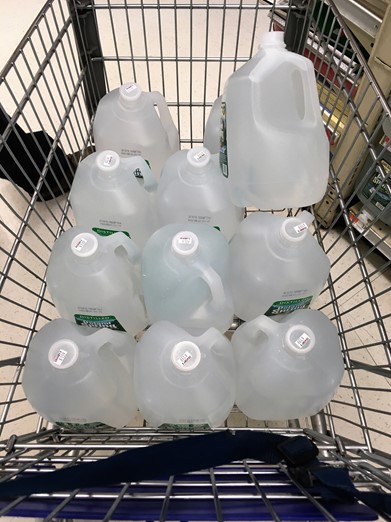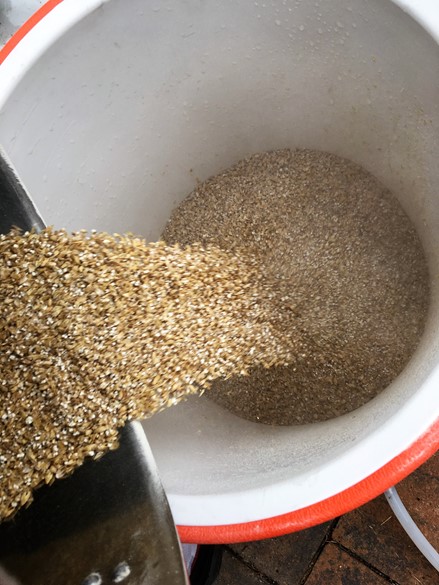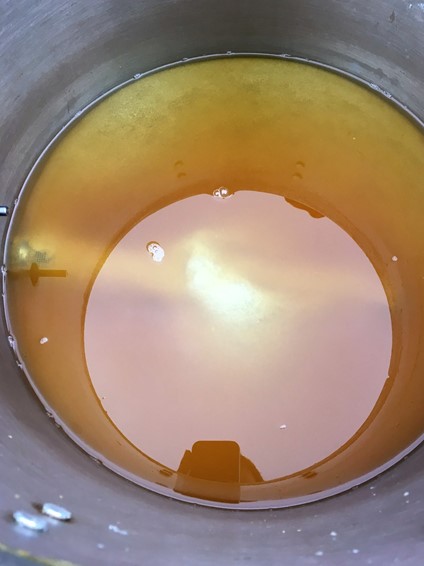The US of IPA is a project where I will brew four regionally inspired American IPAs. I will be pouring all four at the North Shore Brewers tent New England Homebrewers Jamboree. Jamboree is an event open to the public to benefit Make a Wish. Tickets are available here.

Regional IPA sub-styles are a funny thing. There are and have been brewers on the West Coast making pale, hazy, and hoppy ales not unlike New England IPA. One of the most highly regarded IPAs in the Midwest, Modus Hoperandi by Ska Brewing is as dark in color as any East Coast IPA. For a while on the East Coast any IPA that was aggressively hopped and/or bitter was marketed or described as a "West Coast IPA" as a way to differentiate the beer from the darker, more balanced, and more English in character IPAs that were prevalent on the East Coast.
Somewhere along the line I had it in my head that a West Coast IPA was supposed to be bitter. There certainly are prominent examples that are like Sierra Nevada Tumbler, and most of the IPAs produced by Stone. I was surprised during the Regional American IPA: What's Up with All the Crystal Malt seminar at Homebrew Con when Paul Sangster, co-owner of Rip Current Brewing in San Diego described the IPAs in San Diego as being low in bitterness and high in aromatics. I actually stepped to the microphone during the end of the seminar for the Q & A session to ask about this dichotomy. Sangster's short answer was that the bitter West Coast IPA was falling out of favor to a degree, at least in the San Diego area, as less bitter and highly aromatic IPAs are becoming increasingly popular. It reminded me of how hazy New England IPAs are gaining in popularity compared to the traditional East Coast IPA.
The first batch of Broken Fist IPA was so good and so well received by everyone on Memorial Day weekend the consensus was that I had to brew it again. During the seminar the characteristics of IPAs in San Diego Sangster described matched Broken Fist perfectly. I had brewed an example of the style without even knowing it! It is the perfect West Coast IPA to brew for my US of IPA project. . I scaled up the recipe to a six-gallon batch. I plan to bring three gallons of each IPA to jamboree, but I want to have plenty of Broken Fist to share with friends who won't be at jamboree and to enter into competitions.
The only way I could brew six gallons in my apartment would be to brew two separate three gallon batches. That would be an eight to nine-hour brew day. No thanks! I texted Andy about having another brew day, but only a few weeks after he brewed The Commonwealth vs. Chalifour, and having a newborn, it was probably too soon to for another brew day at "Cabot Street Brewery". Luckily, Adam loved the original Broken Fist so much, he volunteered his backyard. I packed up all my gear just like I had for the North Shore Brewers beer camp.
I made a few additional tweaks from the original recipe for batch number two. I was also able to buy eight ounces of Citra hops for this batch, while I had to make due with only two ounces for my previous three-gallon batch. I want this batch to have an even more assertive hop aroma. Beyond the additional dry hops, I am increasing the bitterness just a little bit as I thought the only flaw in the first batch was that it was slightly sweet.

For water I used all distilled and added salts to get the water profile exactly as I wanted it. I did this for a few reasons: I don't know the water profile for Peabody like I do for Beverly, the water in San Diego is very soft, and I wanted to be sure high chloride water wouldn't make the beer too malty.
After loading and unloading all my gear, the brew day itself was okay. We spilled some spent grain which attracted a bunch of birds to Adam's backyard. I forgot to bring a thermometer, so I couldn't check my mash temperature and I estimated the temperature of my sparge water. I trusted Beer Smith's calculations and just let the mash sit in my modified cooler. After sparging I filled my eight-gallon kettle almost to the very top. I watched that kettle like a hawk to make sure the wort didn't boil over onto Adam's patio.


I used a batch sparge. Essentially I added a little more than half of the water I needed to the mash, stirred the mash once it was done, drained it as quickly as possible, added my sparge water, stirred, and drained again. Whereas when I brew with Andy we will fly sparge, and slowly sprinkle the sparge water over the grain bed like a coffee maker.

My original gravity and volume were both short. I ended up with a little over five gallons. I don't think I took the volume of hops into consideration enough. This was only my second batch with my cooler and propane burner. It is a matter of getting used to my system which will happen the more I use it. As I was running my wort chiller it started to sprinkle. I moved the wort into the fermenter, brought it home, and used my trusty swamp bucket to bring my wort down to fermentation temperature before pitching my yeast.
One down, three to go! I will probably brew my three other IPAs in my apartment as three-gallon brew-in-a-bag batches. Hopefully the heat isn't oppressive when I do.
Click here for the recipe.
Follow me on Twitter @JChalifour
Share what beers you are drinking with me on Untappd
No comments:
Post a Comment